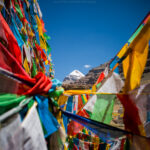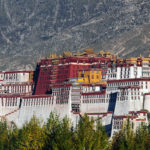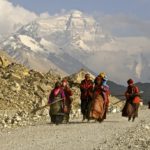Potala Palace is wonderful, both in size and beauty. The Potala Palace is the very image of Lhasa, the provincial capital of Tibet. It is located on Red Hill in northwest of the city, the Potala Palace was initially served as the residence for the marriage of Emperor Songtsen Gampo and Princess Wenchang in Tang Dynasty. This royal residence was wrecked twice in its history. In 1645, it was modified and extended by Dalai Lama V. The whole venture took about 50 years to finish.
Potala Palace comprises the two sections –
The Potala Palace is made out of two sections. The first one is the laces utilized by the Dalai Lama as his living chambers and for political activities and the second section is the stupas of the progressive eras of Dalai Lamas and different Buddhist lobbies. The fifth and 6th stories were utilized as the workplaces and living councils of the Prince Regent. The seventh story was the Winter Palace of the Dalai Lama. The corridor is outfitted with gold bowls, jade dishes.
Buddhist paintings and numerous different fortunes, highlight the position of the dwellers. Outside the Sunlight Hall is an open gallery offering a bird’s-eye perspective of the entire of Lhasa. Undulating mountains are seen, the excellent Lhasa River, tracts of fields, tree-shaded towns and the sparkling Jokhang Monastery are the beauty of this place. The first part is the White Palace, which was built in 1645-1653. It has seven stories. The fourth story is the Coqenxag or the Eastern Hall.
The place for royal families and Dalai Lama –
The fifth and sixth stories were used as the offices and living chambers of the Prince Regent. The seventh story was the Winter Palace of the Dalai Lama. The hall is furnished with gold basins, jade bowls, Buddhist paintings and many other treasures, accentuating the high position of the occupant. Outside the Sunlight Hall is a spacious balcony offering a bird’s-eye view of the whole of Lhasa. In the distance are undulating mountain ranges, the beautiful Lhasa River, tracts of fields, tree-shaded villages and the glistening Jokhang Monastery.
The second part is the Red Palace, possesses a territory of 10,000 square meters, where the statues of Songtsan Gambor, Princess Wencheng and around a huge number of Buddhist figures are there. The Qing Dynasty Emperor Kangxi enrolled 100 craftsmen’s of the Han, Manchu and Mongolian nationalities to build the Red place. Most of the Red Palace is taken up with different Buddhist lobbies and eight blessed stupas containing the remaining parts of the Dalai Lamas.
Stupas here are decorated with pearls, jewels and gold –
The sacred stupa for the fifth Dalai Lama is wrapped and decorated with pearls and bits of jewels, coral, golden and agate. Sixipuncog, or the Western lobby, is the biggest corridor in the Red Palace. The lobby covers 725 square meters, and holds a plaque bearing an engraving by Emperor Qianlong of the Qing Dynasty. Inside the lobby is the holy throne of the Dalai Lama and a couple of colored silk. The Three-World Hall, which is the most astounding in the Red Palace, holds the Beijing-release Dangyur which Emperor Yongzhen of the Qing Dynasty presented to the seventh Lalai Lama.
The westernmost segment of the Red Palace is the Hall of the Holy Stupa for the thirteenth Dalai Lama. It is a consecrated place for Tibetan Buddhism, the lobby and passageways inside are enriched with paintings, which are about the Buddhist lessons and stories.



